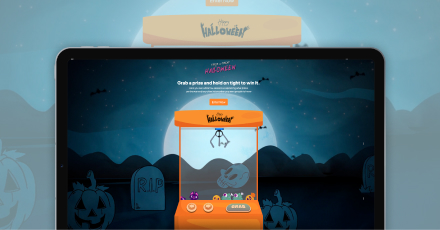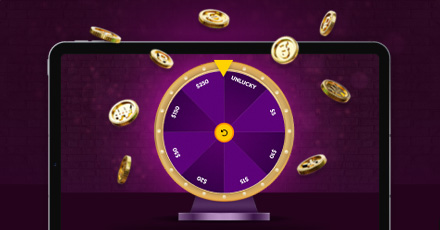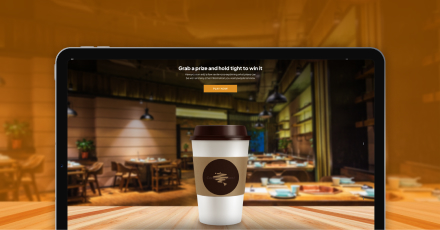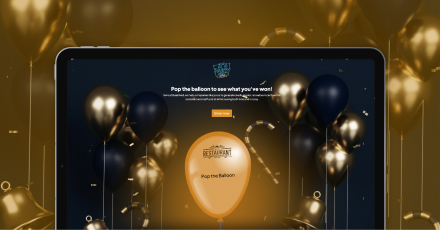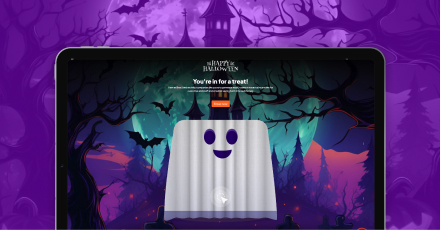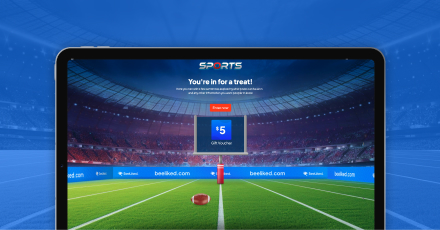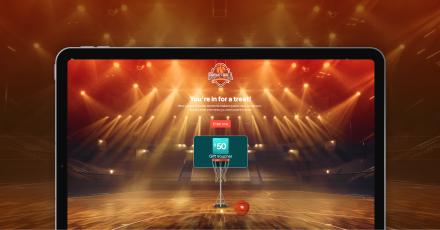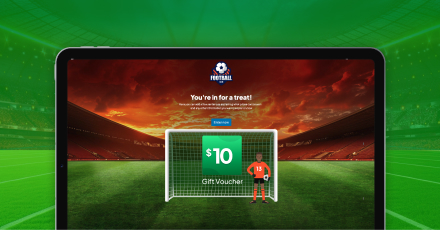Gamification has gained momentum over the past decade, and it’s showing no signs of slowing down. The global gamification market is expected to grow from $9.1 billion in 2020 to $30.7 billion by 2025 at a Compound Annual Growth Rate (CAGR) of 27.4%. Industries using gamification for growth have noticed its potential and are integrating game mechanics into their strategies to boost productivity, increase engagement, and generate greater customer retention. As gamification evolves, its impact is increasingly evident in specific industries that have embraced and leveraged its potential to drive meaningful results. In this article, we’ll analyze how gamification is transforming industries, highlighting the creative ways companies are applying game mechanics to achieve real-world results.
Industries Using Gamification for Growth: The Benefits

- Enhanced brand visibility: Gamified experiences generate excitement, attracting new customers and broadening the company’s reach. Brand recognition naturally improves as more people engage with these experiences.
- Stronger engagement and attention: Gamified features such as challenges and rewards appeal to users’ desire for achievement. These elements increase customer satisfaction, loyalty, and repeated interactions with the brand.
- Boosts productivity and learning: Gamified platforms motivate employees through structured challenges, rewards, and progress tracking. This approach is particularly effective in employee training and education, improving skill development and knowledge retention.
- Encourages community interaction: Gamification encourages user interaction both with the brand and other users. This collaborative atmosphere builds a sense of community, strengthening the company’s image and appeal.
- Valuable insights through user data: Interactive elements offer opportunities to gather customer behavior and preferences data. Companies can analyze this data to refine their strategies and provide more tailored, impactful experiences.
How Gamification Is Transforming Industries: Emerging Trends and Technologies

Accelerated technological advancements, evolving user psychology, and a growing emphasis on ethical implementation are behind gamification’s rapid evolution. These factors continue to shape user experiences across industries, driving new gamification trends and technologies that redefine how businesses engage their audiences. Here are the key technologies impacting industries using gamification for growth:
- Immersive Experiences With Augmented Reality (AR) and Virtual Reality (VR)
AR and VR are transforming gamification by delivering immersive, interactive experiences. Their flexibility makes them particularly effective in corporate training, education, and healthcare. According to a 2022 PwC study, VR-based trainees learn four times faster and are 275% more confident in applying their skills compared to traditional methods.
- Artificial Intelligence (AI) and Predictive Analytics for Personalization
AI enhances gamification by dynamically adjusting content and challenges to match each user’s behavior and skill level, increasing engagement and retention. In education and healthcare, predictive analytics plays a crucial role in analyzing user interactions, providing real-time feedback, and optimizing learning paths.
- The Rise of Microlearning
Microlearning and quick challenges cater to modern learners who prefer short, focused sessions. Research indicates that this method enhances information retention by up to 60% and leads to 70-82% completion rates, outperforming traditional formats. Gamification enhances these short sessions, improving productivity and knowledge application in corporate training environments.
- Gamification on Social Media
Social media platforms are using game mechanics to increase participation and user loyalty. LinkedIn motivates users with profile completion meters, skill endorsements, and achievement badges, while Instagram employs polls, quizzes, and challenges through Stories. These features encourage interaction and higher engagement by tapping into the human drive for achievement and collaboration.
- Future Outlook: Interactive Growth
Demand for interactive, gamified experiences is expected to rise as more people continue to work and learn remotely. With increased time spent in virtual environments, gamification is set to play an even more significant role in enhancing productivity, learning, and user engagement. Businesses that embrace these emerging trends will be well-positioned to create innovative and impactful experiences.
How Gamification is Transforming Eight Key Industries

Gamification is no longer confined to entertainment. Industries using gamification for growth are leveraging it to enhance engagement, drive behavior, and create more rewarding experiences. From education and finance to healthcare and retail, companies use interactive challenges, rewards, and game mechanics to improve learning, boost customer loyalty, and streamline workplace productivity. Here’s how gamification is transforming these eight key industries and reshaping their approach:
1. Education: Making Learning More Engaging and Effective
Gamification has redefined how students and professionals absorb information. By integrating interactive challenges, leaderboards, and digital rewards, schools, universities, and corporate training programs create immersive learning experiences that increase motivation and knowledge retention.
- 89% of Americans believe games help develop valuable skills, reinforcing gamification’s role in education.
- VR-based training and simulations prepare employees in high-pressure fields like healthcare, manufacturing, and customer service, bridging the gap between theory and real-world application.
2. Retail: Driving Engagement and Brand Loyalty
Retailers use gamification to enhance customer interactions and differentiate themselves in a competitive market. From interactive promotions to AR shopping experiences, brands are creating more engaging ways for consumers to explore and purchase products.
- Gamified loyalty programs and personalized shopping challenges boost acquisition rates by up to 700%.
- AR and VR-powered virtual try-ons allow shoppers to test products in immersive ways, increasing confidence in purchases.
- Companies using gamification report longer session times, higher repeat visits, and stronger brand engagement.
3. Finance: Encouraging Smart Money Management
Financial institutions are turning to gamification to simplify complex financial concepts and improve customer engagement. Interactive tools make budgeting, investing, and saving more accessible and rewarding.
- Savings challenges and milestone rewards motivate users to set financial goals and track progress.
- Gamified financial literacy platforms break down complicated topics, helping consumers build better financial habits.
- Interactive banking incentives strengthen customer retention and brand loyalty by rewarding positive financial behaviors.
4. Healthcare: Improving Patient Outcomes and Training
Gamification is reshaping healthcare by making treatment plans more engaging, rehabilitation more effective, and medical training more immersive. Hospitals, clinics, and wellness platforms use game mechanics to encourage better health choices and improve patient adherence.
- Wearable devices and health apps track progress, reward consistency, and encourage healthy habits.
- VR-based rehabilitation programs make physical therapy more interesting, increasing patient motivation and compliance.
- Medical training simulations provide hands-on learning for professionals, reducing errors and improving real-world applications.
5. Entertainment and Media: Enhancing Audience Interaction
Entertainment brands use gamification to increase engagement, deepen viewer participation, and create more interactive content experiences.
- Live quizzes, polls, and challenges make content more interactive, boosting viewer retention.
- Streaming services use reward-based incentives to keep users engaged for longer periods.
- Social media platforms integrate gamified elements to encourage shares, comments, and viral content growth.
6. Hospitality and Tourism: Creating Immersive Guest Experiences
Hotels, resorts, and travel brands use gamification to make stays more interactive, encourage exploration, and strengthen customer loyalty.
- AR-powered city tours and scavenger hunts provide guests with engaging, self-guided experiences.
- Tiered loyalty programs personalize rewards, making return visits more attractive.
- Interactive QR code rewards encourage guests to engage with amenities, boosting on-property spending.
7. Restaurants: Driving Sales and Customer Engagement
Restaurants are incorporating gamification into their marketing and loyalty strategies to attract customers, encourage repeat visits, and boost brand awareness.
- Mobile games and interactive menu promotions keep diners entertained and engaged.
- Challenge-based rewards incentivize repeat visits, increasing loyalty program participation.
- KFC Japan’s Shrimp Attack campaign generated 854,000 plays and a 106% sales increase, proving the power of gamified promotions.
8. Human Resources (HR): Boosting Employee Motivation and Retention
Companies are applying gamification in HR to enhance training, improve performance, and create more engaging work environments.
- Performance-based challenges and incentives drive productivity and motivation.
- Gamified onboarding programs increase engagement and reduce employee turnover.
- Recognition and rewards systems foster a positive workplace culture, leading to higher retention rates.
How gamification is transforming industries is evident in the way businesses are using it to create deeper engagement, stronger loyalty, and more efficient workflows. From making education more interactive to driving customer retention in retail and finance, companies are leveraging game mechanics to influence behavior and boost results. As adoption grows, gamification is not only enhancing these industries — it’s redefining how they operate.
Industries Using Gamification for Growth: A Strategy That’s Here to Stay
How gamification is transforming industries is evident across multiple sectors. As technology advances, businesses are finding new ways to use game mechanics to drive engagement, improve learning, and strengthen customer and employee relationships. With proven success and growing adoption, industries using gamification for growth will continue to shape the way businesses connect, compete, and innovate.
Ready to see gamification in action? BeeLiked offers a range of interactive promotions designed to captivate audiences, boost participation, and drive real results. Explore our promotion types and discover how gamification can elevate your marketing strategy.

